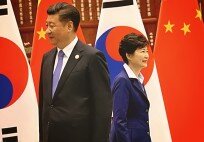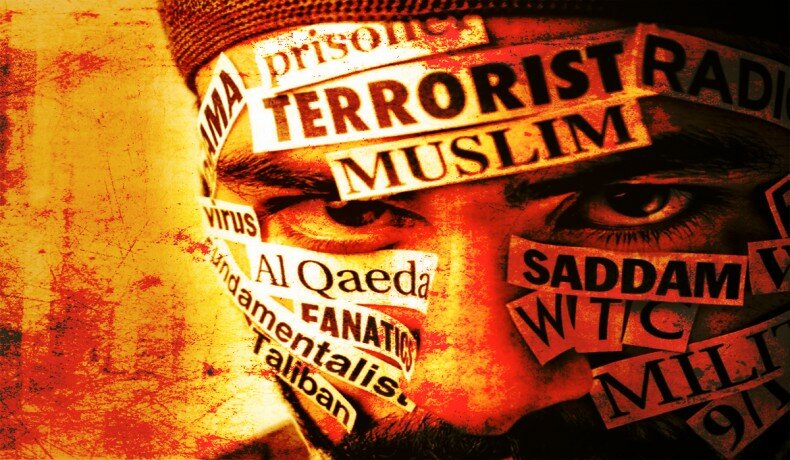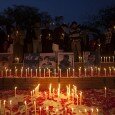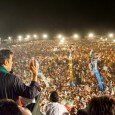By Irsa Shafiq & Musharaf Sultana –
“Extremism breeds extremism”, so there is a very interconnected and interdependent relationship between these two. The 9/11occurred more than one and half decade ago and we as Muslims are still facing the consequences of it. The situation of that time still needs to be compared with the present one in terms of betterment or worse.
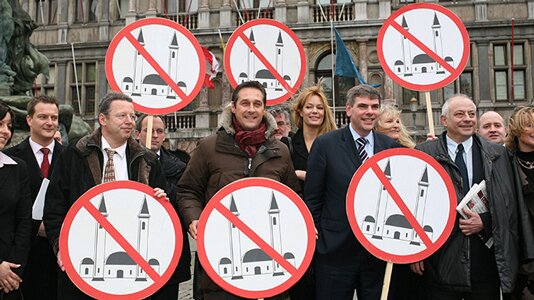 Things seem different though the shadows of 9/11 have not gone so far away, as at present there are several national and international radical militant groups and organizations working that are aggravating these tensions, regionally and internationally.
Things seem different though the shadows of 9/11 have not gone so far away, as at present there are several national and international radical militant groups and organizations working that are aggravating these tensions, regionally and internationally.
The Al-Qaeda and Taliban introduced the extremely violent ideology and ruined the face of Islam and Muslims. The rise of ISIS, on similar and hard-lined beliefs can be called as renaissance of radicalization and brought a new turn to Islam-o-phobia.
When the ISIS, Al-Qaeda and the Taliban propagate their version of Islam; even a moderate Muslim feels a deep sense of terror. Islam-o-phobia in Muslim countries is rarely ever spoken about. Particularly in Pakistan, where people are living under the fear of religion too; our mosques, churches and temples are not safe.
In fact, even questioning religion is unthinkable. The wide spread Islam-o-phobia threatened the Muslim community around the globe, to the extent that they cannot even openly condemn the violent mindsets prevailing within themselves, which presents a gloomy picture, indicating presence of apprehension at intra-community level.
Those who misrepresented Islam and ruined its face, those who connected Islam with violence, in the name of Holy war, and their self-proclaimed holy-wars brought difficulties for whole Muslim community. The liberal-moderate voices are suppressed and ummah largely remain failed to build/improve its image.
 Islam-o-phobia was considered as a myth prior to 9/11 incident. As Muslims had pro-war tendencies, the historical chain of events like regional wars in Middle East, Afghan jihad and freedom movements like Palestine and Bosnia etc. generated a perception of Islam-o-phobia. However the later developments of post- 9/11 events like extension of Global War On Terror in Iraq and Afghanistan, the trickledown effect of violence among global Muslim community, the political intrigues, and ever increasing gap between East and West added fuel to the furnace. Islam-o-phobia was even flourished by social-media and cartoon controversies, which provoked reactions by Muslims at large.
Islam-o-phobia was considered as a myth prior to 9/11 incident. As Muslims had pro-war tendencies, the historical chain of events like regional wars in Middle East, Afghan jihad and freedom movements like Palestine and Bosnia etc. generated a perception of Islam-o-phobia. However the later developments of post- 9/11 events like extension of Global War On Terror in Iraq and Afghanistan, the trickledown effect of violence among global Muslim community, the political intrigues, and ever increasing gap between East and West added fuel to the furnace. Islam-o-phobia was even flourished by social-media and cartoon controversies, which provoked reactions by Muslims at large.
The recent heart-wrenching incident of killing three Muslim students at Chapel Hill is another form of religious hatred, biased perception and Islam-o-phobia. Several examples are also there when Muslims observing Islamic practices or Muslim women faced problem in wearing headscarf and Hijab like in France where headscarf ban is a major concerning point for local Muslim community where 128 incidents were registered in two weeks following recent trends of racist attacks in Paris.
 Similarly in Canada, where a Canadian judge refused to hear Muslim women’s case unless she removes her headscarf , therefore Muslims face swear criticism in the western liberal societies, pushing them into social alienation, and perceived by West as rejection of their cultural values. The accession of Turkey in European Union shows the deep concern as it could generate an Islamization process in Europe.
Similarly in Canada, where a Canadian judge refused to hear Muslim women’s case unless she removes her headscarf , therefore Muslims face swear criticism in the western liberal societies, pushing them into social alienation, and perceived by West as rejection of their cultural values. The accession of Turkey in European Union shows the deep concern as it could generate an Islamization process in Europe.
A phobia is defined as an exaggerated, usually inexplicable and illogical fear of a particular object, class of objects, or situation. It may be hard for the afflicted to sufficiently determine or communicate the source of this fear, but it exists. In recent years, a specific phobia has gripped Western societies known as Islam-o-phobia.
The term “Islam-o-phobia” was first introduced as a concept in a 1991 Runnymede Trust Report and defined as “unfounded hostility towards Muslims, and therefore fear or dislike of all or most Muslims” .The term was coined in the context of Muslims in the U.K. in particular and Europe in general. The report pointed to prevailing attitudes that incorporate the following beliefs, that Islam is monolithic and cannot adapt to new realities, Islam does not share common values with other major faiths. Islam is a religion of violence and supports terrorism. Islam is a violent political ideology.
However many believed that the term islamophobia is a “politically manipulative coinage” designed to silence the critics of Islamic supremacy. This term was invented deliberately by Muslim brotherhood front organization International Institute of Islamic Thought (IIIT) in effort to silence critics of political Islam, advocated the need to invent a term that would help to portray themselves as victims.
 In reality it is not the West alone, which widens the concept of Islam-o-phobia, it is we, ourselves who intensified the situation. As a result we are afraid of our open prayers and religious practices, where as it should be other way around, the religion is to be loved and spread love and harmony not to get afraid off.
In reality it is not the West alone, which widens the concept of Islam-o-phobia, it is we, ourselves who intensified the situation. As a result we are afraid of our open prayers and religious practices, where as it should be other way around, the religion is to be loved and spread love and harmony not to get afraid off.
The Army Public School attacks in Peshawar on 16 December 2014, subsequently targeting Shia Imam Barghas and several other sectarian hate incidents in different parts of the country in early 2015 are the proofs of making us ‘Islam-o-phobic’. People feel threatened with growing sectarian biases and grievances, moreover, the expansion of ISIS, al-Qaeda internationally and Taliban identities are resulting in local Islam-o-phobic sentiment.
Keeping aside the religious institutions; our contemporary educational institutions are not even liberated from religious activities, rise of Jamiat Tulba in International Islamic University Islamabad, and Jamate-Islami wing in Punjab University and in different universities, are the very examples, proving the religion under political usage.
 The regional and global dynamics that pushed Pakistan towards the imported war which has now become our own, after the sacrifices of more than 70,000 citizens, and armed forces personnel; today as a nation we are standing at the verge of destruction, a psychological trauma and each day living under collective unknown fears and shared insecurities.
The regional and global dynamics that pushed Pakistan towards the imported war which has now become our own, after the sacrifices of more than 70,000 citizens, and armed forces personnel; today as a nation we are standing at the verge of destruction, a psychological trauma and each day living under collective unknown fears and shared insecurities.
In nutshell it can be assumed that Muslims themselves are the main source of “Islam-o-phobia” because of the evil and disturbing acts of some radical individuals, and above all the silence of majority regarding those acts. Muslims are facing hatred and discrimination all over the world, and the uncultured people think that “all Muslims are terrorists”, whereas terrorism has nothing to do with the religion be it Islam or any other religion, so the need is to look into the fact of the matter and detailed dissection, not a mere cosmetic surgery.
 Muslim community should find ways to fight Islam-o-phobia by spreading awareness and raising consciousness about real tenets of Islam among people. Islam completely approves the individual freedom of speech and expression to every citizen, and Pakistan was also created as an Islamic ideological state. Freedom of expression and religious liberty are also essential parts of our constitution but there is no space for spreading hatred in the name of that freedom.
Muslim community should find ways to fight Islam-o-phobia by spreading awareness and raising consciousness about real tenets of Islam among people. Islam completely approves the individual freedom of speech and expression to every citizen, and Pakistan was also created as an Islamic ideological state. Freedom of expression and religious liberty are also essential parts of our constitution but there is no space for spreading hatred in the name of that freedom.
If we as Muslims cannot find the culprit, if Islam-o-phobia exists in the world or even in Pakistan, then the Muslims would have to be blaming themselves in promoting it. Radicals are causing the damage to Islam and Pakistan as well. There is clearly a need for a properly resourced and preferably Muslim-led organization to extend and deepen the work on this issue. As Islam is a religion of peace so individual acts and extremist tendencies should be condemned, not the religion and its teachings.
The writers are Islamabad based freelance researchers




















































